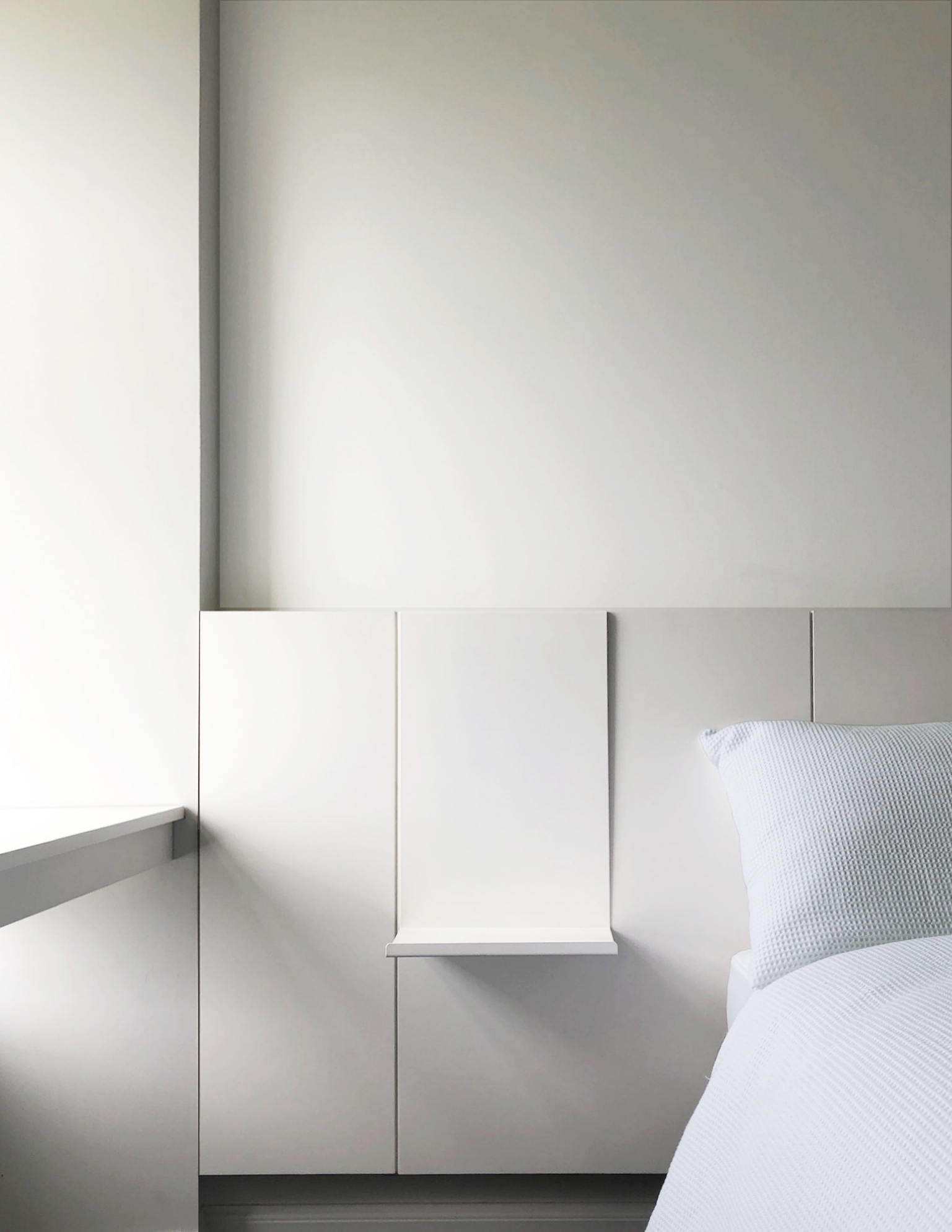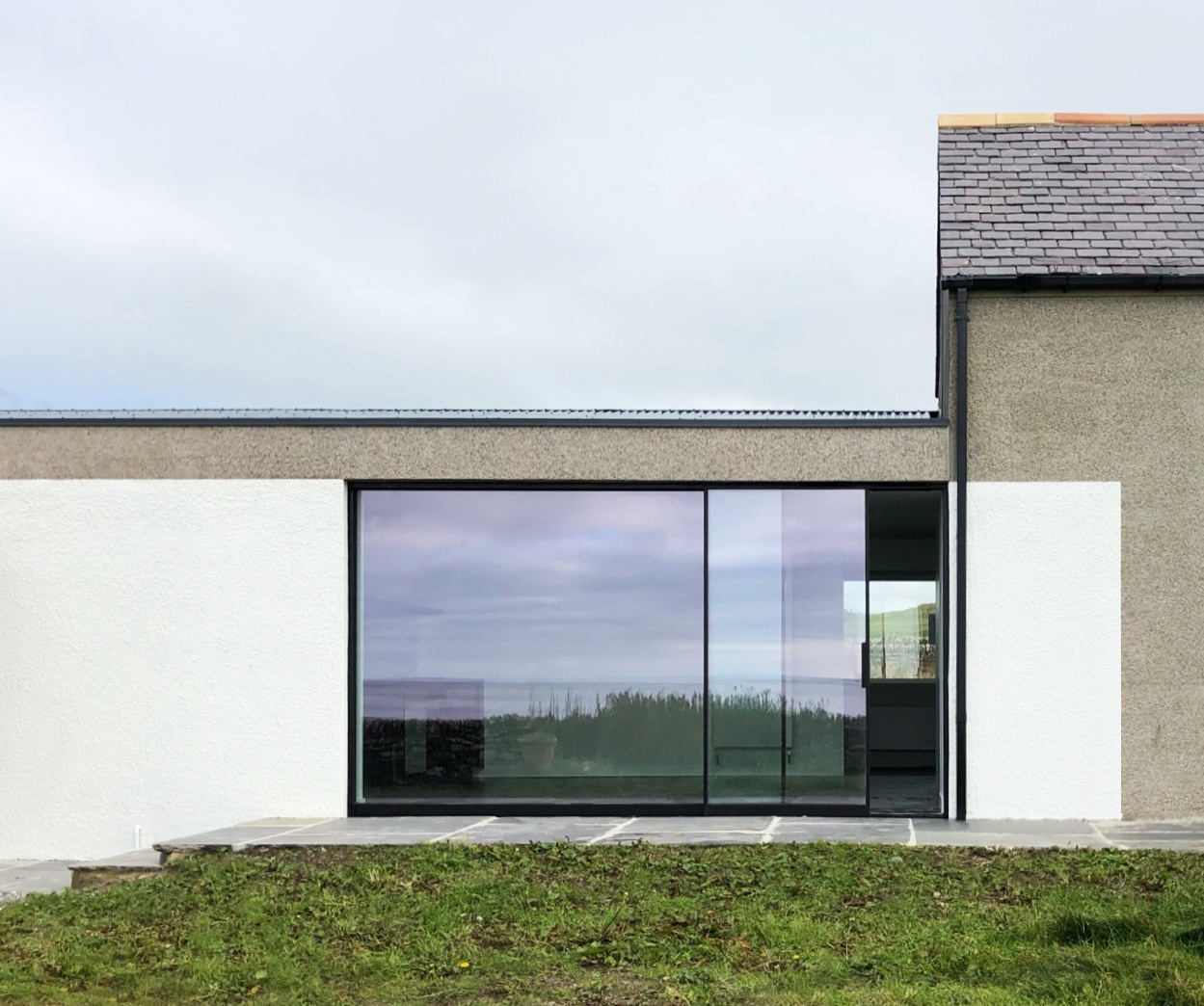STUDIO NIRO: Crafting Spatial Narratives

September 2023
Words by Slancha/STUDIO NIRO
Can you tell us about STUDIO NIRO, how it started and what it aims to achieve as a design practice?
The practice was born from a number of conversations we had about practice, and what an architecture and design studio could be. We both have design interests and experience beyond the construction industry and we were motivated by the idea that we could operate across disciplines and sectors.
At the time, we were both employed by Edinburgh practice, Reiach and Hall Architects [R+H], and had worked together to deliver a large public building.
On reflection, we now realise that, quite quickly, we were working on a diverse range of projects: HANDSEL: the design and production of an object and packaging for a corporate gift for British Council Scotland; visual identity, graphic design and spatial design for a new restaurant, The Little Chartroom; 165 Leith Walk: the refurbishment and reconfiguration of an existing building and new artists studios for Edinburgh City Council [this was the continuation of a job we had worked on during our time at R+H and we worked as subconsultants to R+H after our departure].
We then gained a number of other architectural, public art projects through competition and were approached by private clients to develop residential and commercial work.
We try to balance our portfolio with both public and residential work and we have regular graphic work with longstanding clients. On some projects we will design and deliver the architectural, interior, furniture, graphics and fit-out elements- from the design of the external wall construction, to the selection of teaspoons!
Our ambition is to maintain diversity in the types of projects we undertake in terms of scale, sector and discipline. In the next few years we hope to expand our portfolio to take on larger architectural work at the same time as developing exhibition and furniture/product design projects.
 Project: The Little Chartroom Interior
Project: The Little Chartroom InteriorPhotographer: Jarosław Mikos

Project: Linkshouse - Orkney Arts Residency
Can you describe your design process as a studio and how your concepts evolve throughout the project?
The design idea is very important to us. For the work to move from being a ‘job’ to becoming a ‘project’* with architectural ambition, this idea, or set of ideas, needs to be excavated and drawn out. This usually emerges in the first stages of design development, but in some more challenging jobs, it takes longer for the idea to land. Working through the project is then a continuous dialogue between these ideas which define the logic of the work [spatially, theoretically etc.], the reality of translating these ideas into space, and the questions of the brief.
*to paraphrase architect Andrew Clancy of Clancy Moore.
Do you have a framework that you follow or does this vary from project to project?
Most architects work to the RIBA [Royal Institute of British Architects] Plan of Work which is a generic framework to help structure projects. We use this as a basis and adjust to make it relevant to each specific project.
STUDIO NIRO often covers multiple design disciplines in a single project, from the architecture right down to the graphics. Can you describe any challenges that come along with this and why being involved in the whole process is important to your practice?
Architects often find it difficult to define where their scope begins and ends. We find our design thinking naturally extends into different territories which may not usually be considered ‘architectural’. But it’s all spatial really, what changes is the scale, medium or material and timescales. To come into existence buildings take a lot of time and money. For this reason it’s also important to us to have other mediums within which we can work which might be more direct and less resource heavy.
 Project: The Little Chartroom Graphics
Project: The Little Chartroom Graphics Photographer: Jaroslaw Mikos
Do you have a design ethos that you stick to as a studio to ensure continuity throughout all types of projects?
Not particularly, ultimately we are interested in ‘good design’. There is no pre-prescribed aesthetic or output. Words/phases which might be used to describe our approach could be: simplicity, proportion, rational, economy of means, cohesion, balance, refined material palette.
Continuity comes from both directors being involved in each project. Fundamentally, we agree on certain design principles, which means we start from a place of shared understanding. However, through a dialogue of drawing and conversation, we can challenge one another’s position, introduce a new reference, or view things from a slightly different perspective, and through this process, a project is developed and refined.
Do you have any tips and tricks for presenting new concepts to clients and getting them on board with your vision?
Ultimately, it’s a question of finding the appropriate drawing, modelling or writing method that is relevant to the way a particular client can engage in spatial ideas - this varies depending on the project and the individuals involved. Communication is of course a two way thing so in-person discussions around these drawings and/or models is a vital part of the design process.
 Project: Nicholas Chamberlaine VI Form
Project: Nicholas Chamberlaine VI FormPhotographer: Christopher Pendrich
What are the challenges that may occur when working with multiple practitioners in a project? How do you overcome these challenges?
Architectural projects always involve multiple people. Our role is usually at the centre of the process, where we lead the design whilst performing a coordination and integration role.
We believe that building good relationships with other practitioners/ disciplines/ makers/ builders etc. is essential to the success of a project - be it large or small.
The skill is to enable different specialisms to focus on their particular area of study whilst facilitating discussion and speculation.
We use meetings or/and workshops to provide a forum to bring different disciplines around the table. When this is successful, the collective output is much stronger than it would be had we worked alone. In many ways the practice of architecture is more about coordinating and communicating than it is about pure design!
Collaboration with the people who make the things we draw is one of the most important and valuable things for us. Recent collaborations include working with Kanso [www.madebykanso.com] on the design of bespoke furniture, and with Norse Stone [www.norsestone.co.uk] on the design of stone sinks for an artists residency in Orkney; with CoDB [www.co-db.uk] on the design of furniture using reclaimed hardwood lab benches and other materials for a school Sixth Form Centre and with Umber + Ochre and their carpenter Pete Hewitt [www.umberandochre.co.uk www.petehewitt.com] on the design of fixtures and furniture for a number of residential projects and restaurants.

Project: Linkshouse - Orkney Arts Residency

Project: Linkshouse - Orkney Arts Residency

Project: Eleanore
Photographer: Jaroslaw Mikos
 Project: Edinburgh Residential Project
Project: Edinburgh Residential ProjectPhotographer: Dino Forte
www.studioniro.com
@studio.niro
